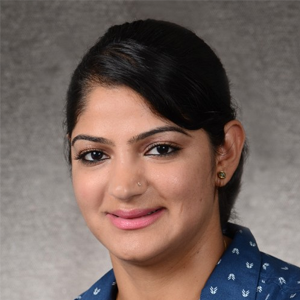Can science publishing be both open and equitable?
The White House Office of Science and Technology Policy, or OSTP, issued a memorandum in August 2022 titled “Ensuring Free, Immediate, and Equitable Access to Federally Funded Research” that has gained widespread attention in the scientific community. The new policy guidance builds on a 2013 memorandum “Expanding Public Access to the Results of Federally Funded Research.”
The 2022 memo requires federal agencies to make all taxpayer-funded publications and their supporting data openly accessible without an embargo period by the end of 2025. The previous memo allowed a one-year embargo. (See the table below for other significant differences between the two.)
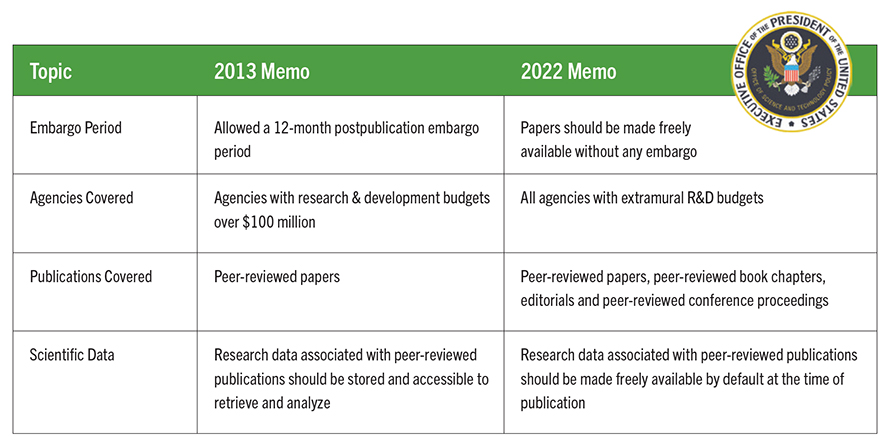
Why does it matter?
U.S. tax dollars fund groundbreaking scientific research. But to see the results, members of the public, who funded the research, must pay a subscription fee through a library or the journal. Individual subscription fees may vary between $10 and $40 per article. Some in the science community see this as akin to double taxation on knowledge. Among them is Alex Toker, editor-in-chief of the Journal of Biological Chemistry.

"The taxpayer who funded the research should have the right to see the outcome of that research without having to pay an additional fee to get access to those papers."
— ALEX TOKER, editor-in-chief of the Journal of Biological Chemistry
“It’s just inherently and morally wrong,” Toker said. “And that’s what really started with the whole open-access movement. The taxpayer who funded the research should have the right to see the outcome of that research without having to pay an additional fee to get access to those papers.”
The advantages of an immediate public access policy became apparent during the COVID-19 pandemic. The free-flowing exchange of research results led to increased translation of basic science discoveries into therapeutic interventions. Researchers were able to develop life-saving mRNA vaccines swiftly only because a Chinese laboratory immediately released the genomic sequence of the COVID-19 virus in early January 2020. This led many in the research community to ask why these benefits should not expand to all scientific endeavors.
Ashley Farley is a program officer of Knowledge and Research Services at the Bill & Melinda Gates Foundation. “When you talk about all lives having equal value and trying to ensure that everyone can lead a productive, healthy life, access to information and being able to build upon and share knowledge is critical to that success,” she said.
The zero-embargo challenge
With the 12-month embargo in the 2013 OTSP memo, publishers could stick to the subscription model. Because there was no change, the memo did not call for additional funding for publication expenses. Authors could submit their work to a subscription-based journal that made author-accepted manuscripts, or AAMs, immediately available for free as “papers in press” but embargoed the final versions of record. In addition, some publishers permitted authors to share their AAMs in a public repository such as PubMed Central. This publishing model is known as green open access.
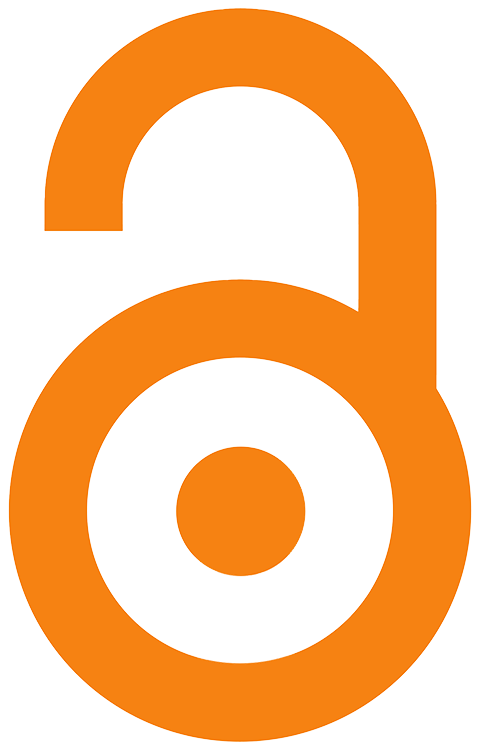
Related story
ASBMB's journals went gold open access in 2021.
A year into the transition, we asked the editors how things were going and about their plans for the future.
The zero-embargo period of the 2022 memo requires the publication model to transition to what’s called gold open access. An article’s final version of record is published online immediately, and the cost of publication is levied against the authors as article processing charges, or APCs. The ASBMB moved its three journals — the JBC, the Journal of Lipid Research and Molecular & Cellular Proteomics — to full open access in January 2021.
Scientific societies, funding agencies and commercial publishers are trying to figure out how to address the transition and rising costs. When asked how the change looked for the JBC, Toker said, “We are now in just the second year of that transition, which, I have to say, has gone very well, but it was not an easy transition by any means.”
APCs for gold open access range from $2,500 to as high as $11,250 per paper. The OSTP memo does not include any provisions for additional government funding to offset publication costs. While federal agencies such as the National Science Foundation and the National Institutes of Health include publication costs in allowable grant expenses, members of the scientific community worry that this extra burden will decrease the funds available for research even as research costs increase.

"When you talk about all lives having equal value and trying to ensure that everyone can lead a productive, healthy life, access to information and being able to build upon and share knowledge is critical to that success."
— ASHLEY FARLEY
Exorbitant APCs also might create a barrier to entry for researchers at underserved institutions or from developing countries who don’t have access to additional funding to pay for APCs (Read the ASBMB’s statement on the OSTP memo).
“There are individuals in countries around the world who simply do not have the resources to even do science,” Toker said. “And when they can, they do not have the resources to pay for APCs. As editors, as journals and as societies in particular, it is our obligation to make sure that we can do something to serve those individuals, those countries, where important science can and should be done.”
So, how can the U.S. government and other funders ensure that equitable open access to readers doesn’t lead to inequities in research participation?
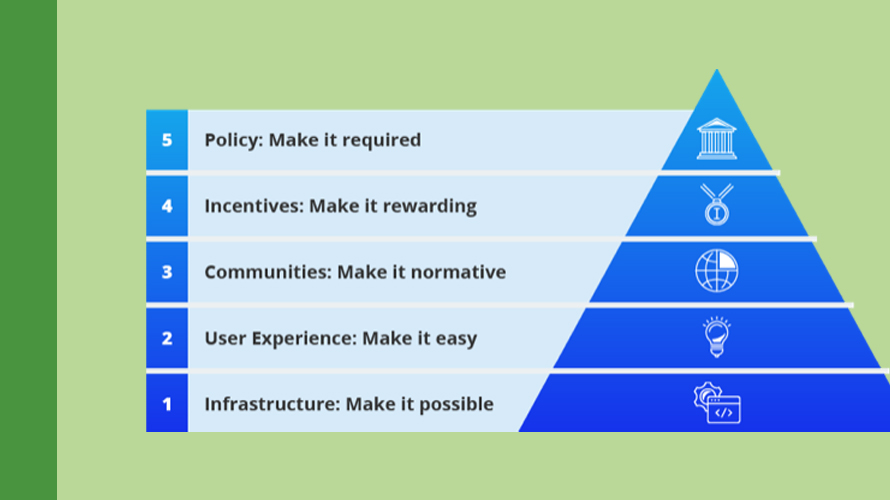
Potential solutions
The Bill and Melinda Gates Foundation pays open-access fees from a central fund; they are not part of a researcher’s grant budget. “But by no means is this going to be sustainable moving forward,” Farley said. “We will address this in the next policy iteration and hopefully do so in a way that is equitable and achievable for any paper that we fund anywhere.”
Most publishers allow researchers to apply for APCs waivers or grants. While these are often granted, the demand exceeds the availability. Production of the final record, copy editing, formatting and author marketing all cost money, and commercial publishers need to make a profit. No legal limit exists to what they can charge.
An alternative model would be an APC structure stratified according to the researcher’s country, community or institution. COAlition S was started by the European Commission and the European Research Council in 2018 to make immediate open access feasible. The coalition is exploring whether incorporating a local purchasing power metric, a method to adjust costs to reflect what local markets can bear, into the APC model would enable equitable global participation.
The Center for Open Science, or COS, is a nonprofit whose mission is to move research toward more openness, rigor and transparency. COS employs an intervention strategy incorporating five tiers: technology to make open practices feasible, community building for easier participation, grassroots movement to normalize it, incentivizing it, and, the last lever at the policy level, mandating open science.
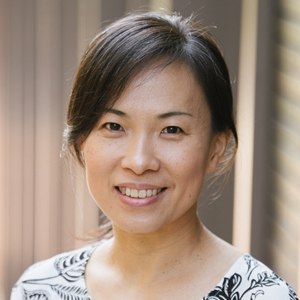
"Currently, the reward system in academia is anchored to publishing papers in high-prestige journals, many of which have high APCs (article processing charges). But this is changing slowly."
— HUAJIN WANG
Huajin Wang is the director of programs at COS. “The culture change layer to ensure equitable participation cannot be overlooked,” Wang said. “Currently, the reward system in academia is anchored to publishing papers in high-prestige journals, many of which have high APCs. But this is changing slowly. Preprints (scientific paper that hasn’t undergone the formal peer-review process) and free-sharing publishing platforms are becoming increasingly popular. This is going to gradually change the reward system.”
Pushing forward
Farley would like to see a change in what science considers the finished product of research. “If I had a magic wand, I would really love to see a preprint-heavy policy,” she said. “Slowly moving away from the version of record at the journal being the end-all-be-all to preprints being able to fulfill an open-access policy from a funders perspective will address the inequities in the fee structure.”
The recent OSTP memo does not clearly specify what version of research papers it will apply to.
“Hopefully, through collective effort, we’re soon going to evaluate the quality of the research more and more just based on the research itself,” Wang said. “So it doesn't matter whether you publish a preprint online or publish in Nature or Science.”
Wang sees the OSTP memo as pushing researchers toward this direction. “Now the perception of open access equals low prestige disappears,” she said, “because everything is going to be open access.”
OSTP also announced 2023 as the Year of Open Science to advance transparent and equitable science policies across the government. The announcement also released an official definition of open science: “The principle and practice of making research products and processes available to all, while respecting diverse cultures, maintaining security and privacy, and fostering collaborations, reproducibility, and equity.”
“I think this is just the beginning,” Toker said. “Honestly, I think we're undergoing a revolution in publishing. It started some time ago, but this is not the end.”
Enjoy reading ASBMB Today?
Become a member to receive the print edition four times a year and the digital edition monthly.
Learn moreGet the latest from ASBMB Today
Enter your email address, and we’ll send you a weekly email with recent articles, interviews and more.
Latest in Policy
Policy highlights or most popular articles

Building a stronger future for research funding
Hear from Eric Gascho of the Coalition for Health Funding about federal public health investments, the value of collaboration and how scientists can help shape the future of research funding.
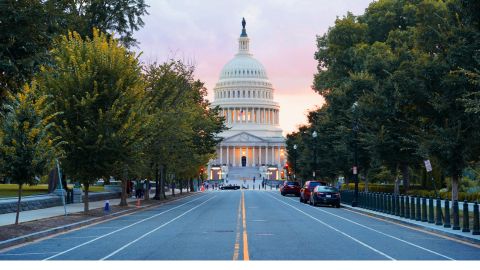
Councilors advocate for science on Capitol Hill
ASBMB Councilors meet with their elected officials to advocate for basic scientific research funding and training the next generation of scientists.

Hope for a cure hangs on research
Amid drastic proposed cuts to biomedical research, rare disease families like Hailey Adkisson’s fight for survival and hope. Without funding, science can’t “catch up” to help the patients who need it most.
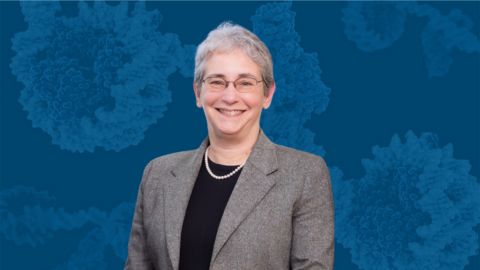
Supporting science through advocacy and community building
ASBMB calls on scientists to take action as funding cuts and policy shifts threaten the U.S. research enterprise, emphasizing the power of community advocacy and persistence in protecting the future of science.
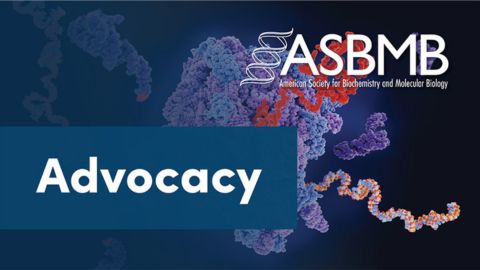
Seven steps to advocating in your home state
Find out how to schedule, prepare for and conduct a productive district office meeting to communicate the importance of fundamental scientific research funding to your representatives.
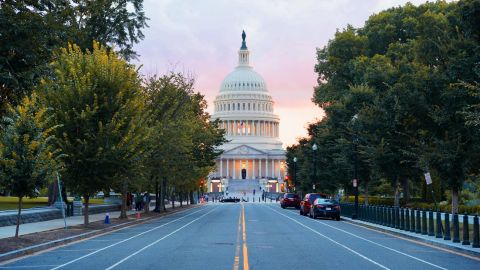
ASBMB members call for funding and agency support amidst uncertainty
In 60 meetings on Capitol Hill, scientists urge legislators to reaffirm support for scientific innovation

